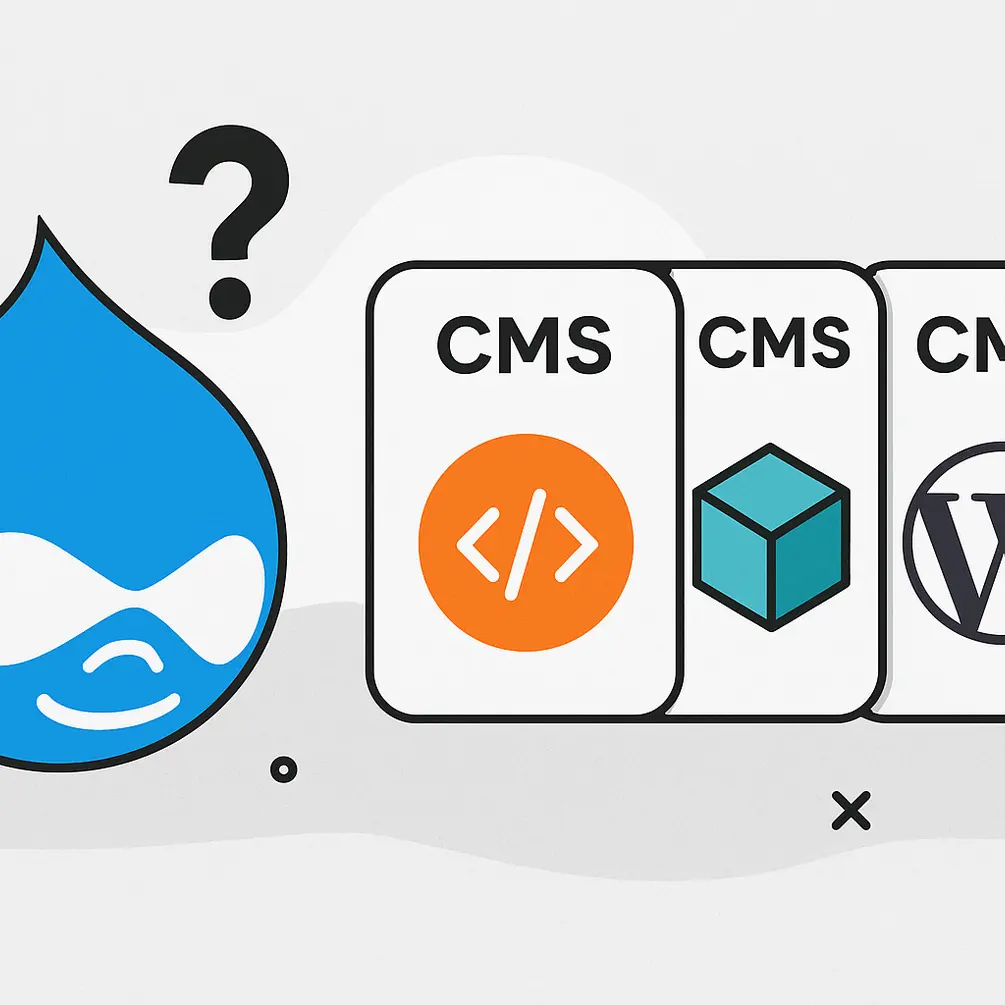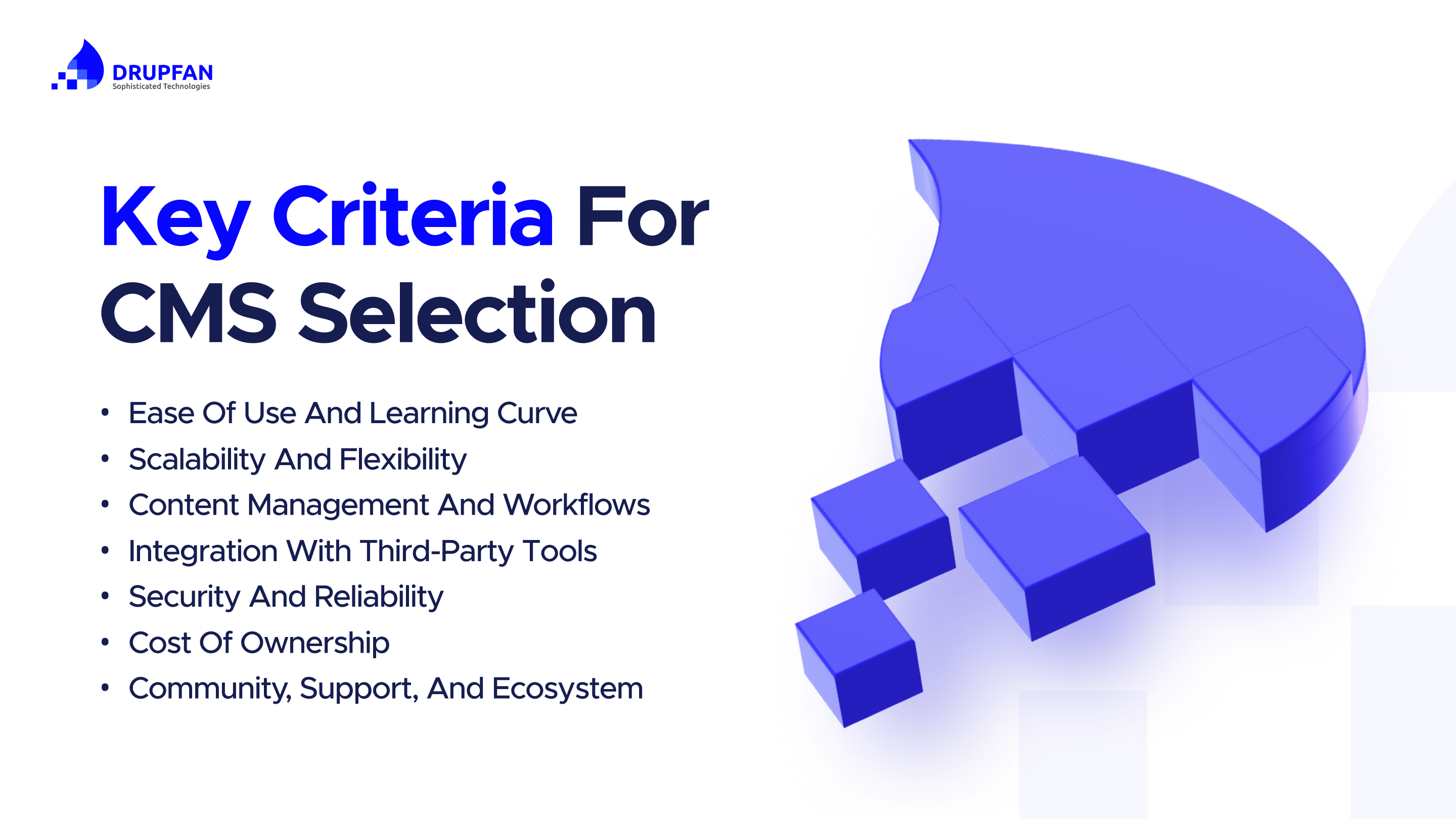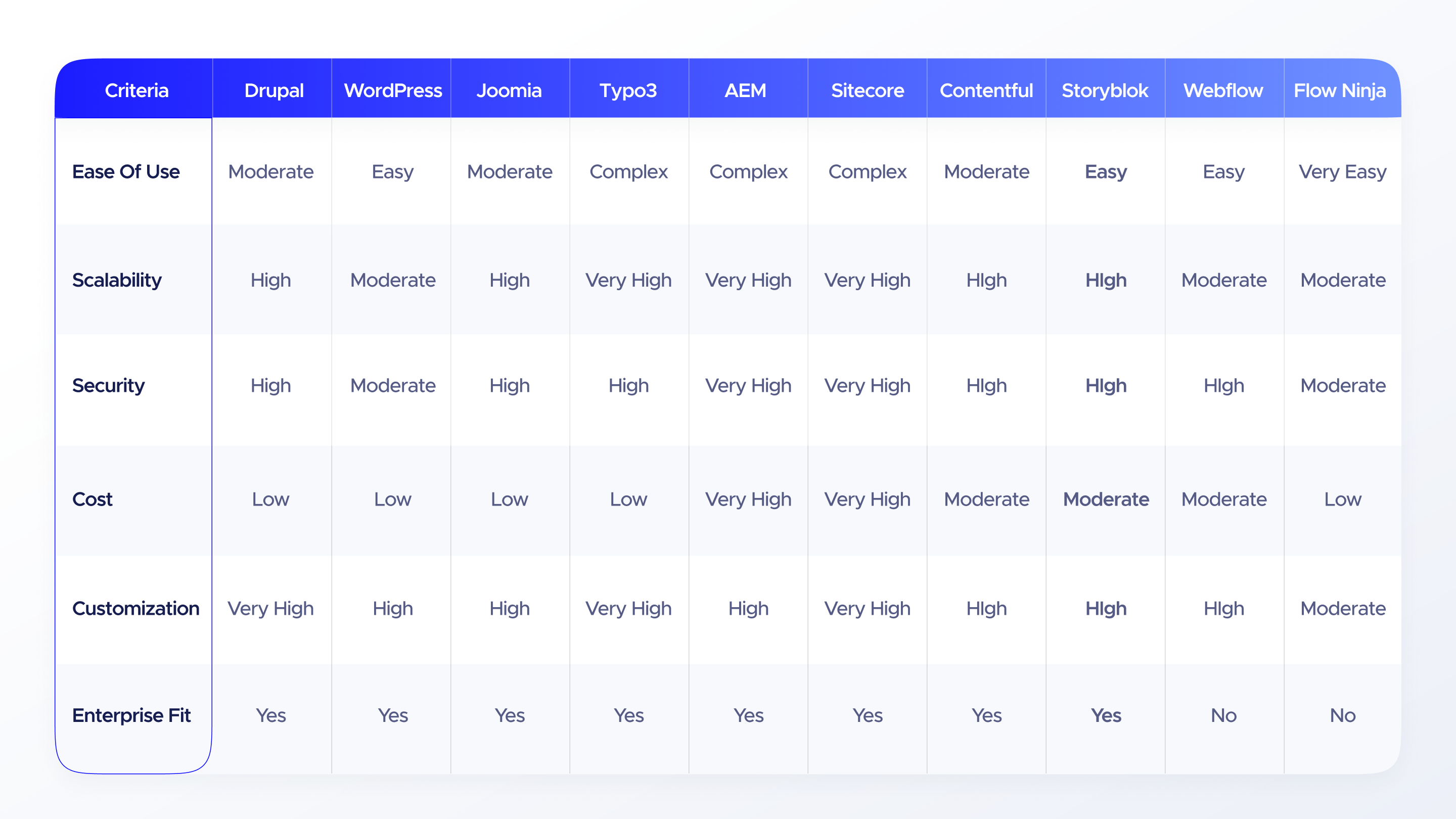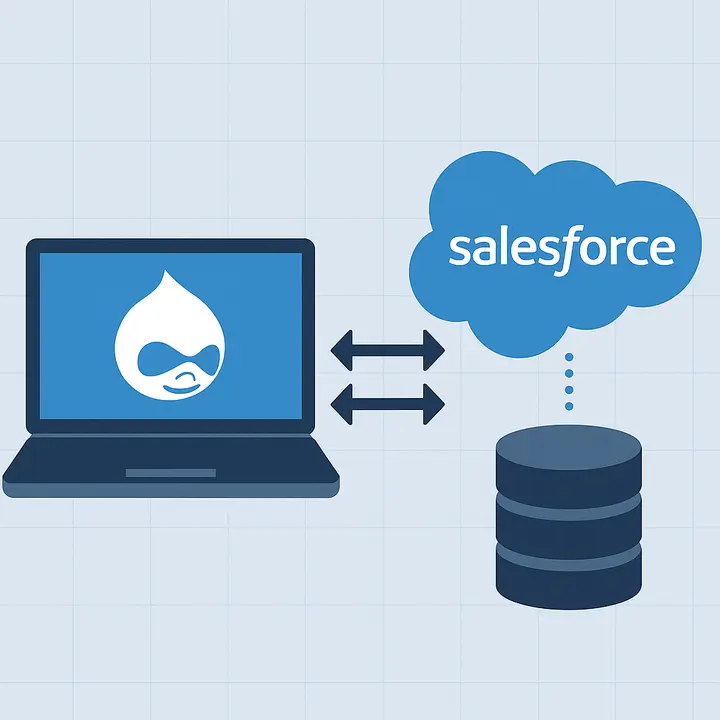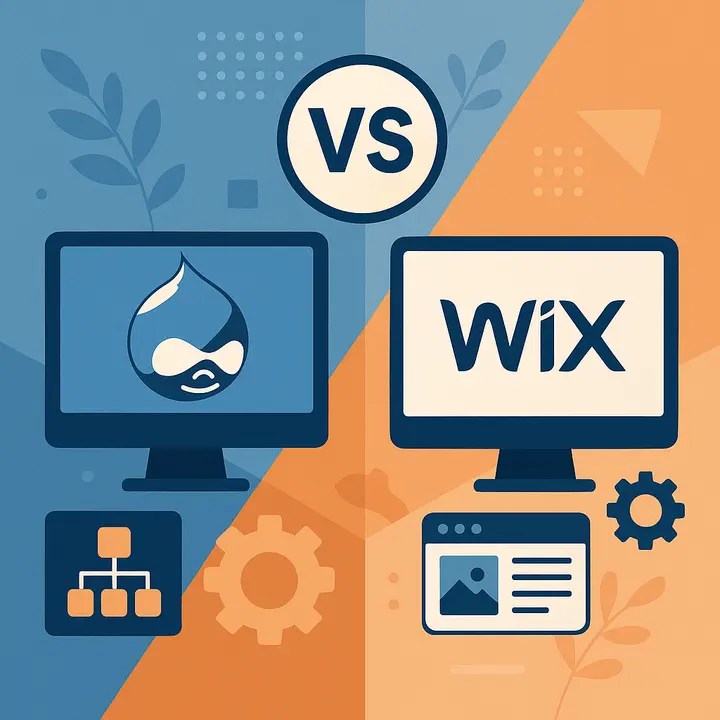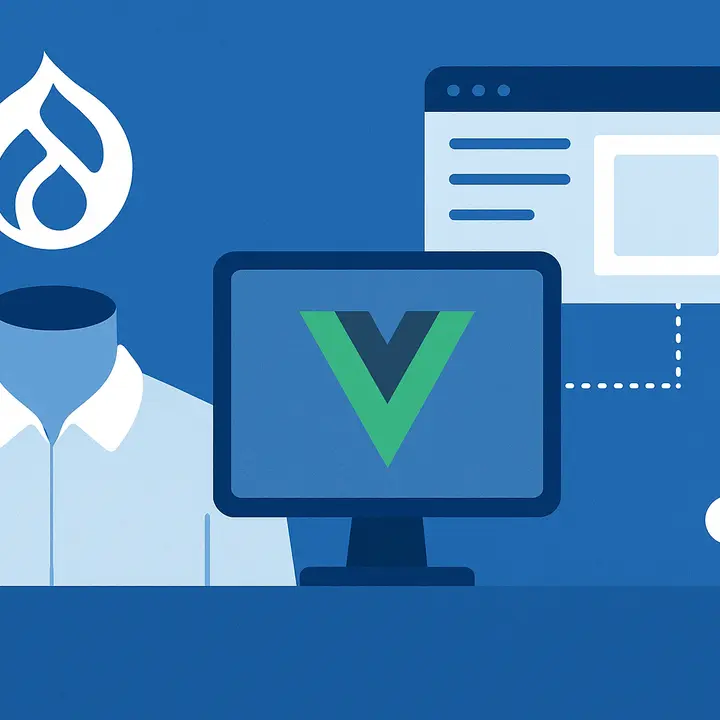Best Drupal Alternative: Top 9 Best CMS Options Compared
When evaluating CMS platforms, it's essential to consider various factors such as ease of use, scalability, customization options, and cost. Below is an overview of some of the most prominent CMS alternatives to Drupal, highlighting their strengths and potential limitations.
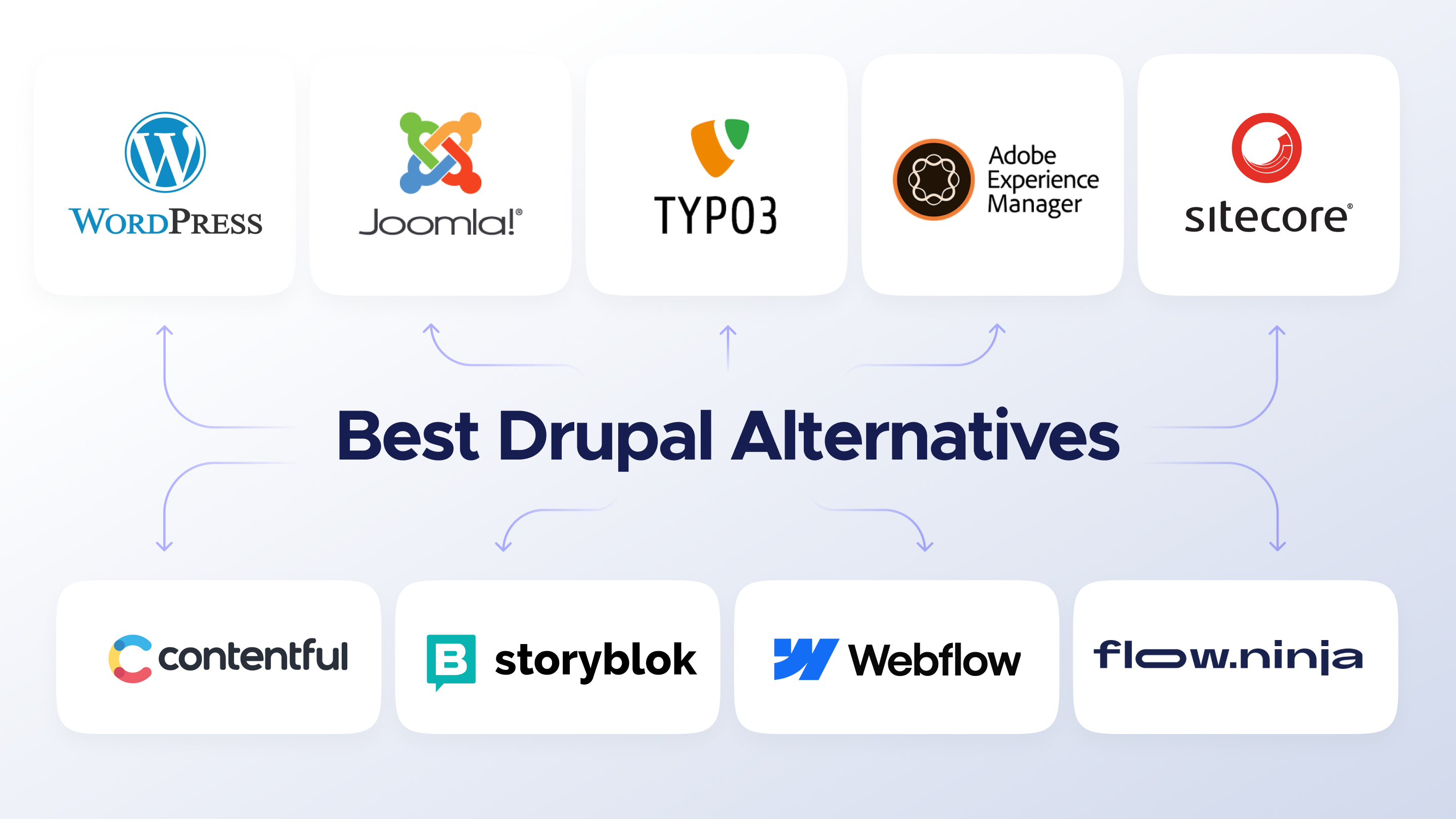
WordPress
Pros:
WordPress is renowned for its user-friendly interface and extensive plugin ecosystem, making it accessible for both beginners and experienced developers. Its large community ensures continuous support and a wealth of resources. Additionally, WordPress offers a wide range of themes and customization options, allowing businesses to create unique websites without extensive coding knowledge.
Cons:
While WordPress is versatile, it may face performance issues with high-traffic sites unless properly optimized. Security can also be a concern, especially if plugins are not regularly updated. Moreover, managing a large number of plugins can lead to compatibility issues and increased maintenance efforts.
Read more: Drupal vs WordPress: which CMS to choose?
Joomla
Pros:
Joomla offers a balance between user-friendliness and customization capabilities. It supports multilingual content out-of-the-box and provides advanced user management features, making it suitable for community-driven websites. Its modular structure allows for flexible content organization and presentation.
Cons:
Joomla's learning curve can be steeper than that of other CMS platforms, especially for users without a technical background. The extension ecosystem, while robust, is not as extensive as WordPress's, which may limit certain functionalities. Additionally, some users report that the admin interface can be less intuitive.
Read more: Drupal vs Joomla: what is the better choice?
Typo3
Pros:
Typo3 is a powerful open-source CMS designed for enterprise-level websites. It offers advanced features like multi-site management, version control, and granular access permissions. Its flexibility allows for complex content structures and workflows, making it ideal for large organizations with specific needs.
Cons:
The platform's complexity requires a higher level of technical expertise, which can lead to increased development time and costs. Typo3's community is smaller compared to other CMS platforms, potentially leading to fewer resources and support options. Additionally, hosting requirements may be more demanding due to their resource-intensive nature.
Adobe Experience Manager (AEM)
Pros:
AEM is a comprehensive enterprise CMS that integrates seamlessly with other Adobe products. It offers robust features for content personalization, digital asset management, and marketing automation. AEM's scalability and security make it an ideal solution for large enterprises with complex digital requirements.
Cons:
The primary drawback of AEM is its high cost, which may be prohibitive for small to mid-sized businesses. Its complexity also necessitates specialized training and dedicated resources for implementation and maintenance. Additionally, the platform's customization options can be limited without significant development effort.
Sitecore
Pros:
Sitecore is a .NET-based CMS known for its strong personalization capabilities and integration with CRM systems. It provides advanced analytics and marketing automation tools, enabling businesses to deliver targeted content and improve customer engagement. Sitecore's scalability supports large-scale websites and digital experiences.
Cons:
Sitecore's licensing fees are among the highest in the industry, making it a significant investment. The platform's complexity requires skilled developers and administrators, which can lead to increased operational costs. Additionally, its proprietary nature may limit flexibility compared to open-source alternatives.
Read more: Drupal vs Sitecore: Choosing the Right CMS Platform for Your Business
Contentful
Pros:
Contentful is a headless CMS that enables flexible content delivery across multiple channels via its APIs. Its platform-agnostic approach allows businesses to create omnichannel experiences. Contentful's robust versioning and rollback features enhance content management efficiency.
Cons:
Being a headless CMS, Contentful requires development resources to build the front-end, which may increase initial setup time and costs. Some advanced features, such as localization and analytics, are available only in higher-tier plans. Additionally, users may face a learning curve when transitioning from traditional CMS platforms.
Storyblok
Pros:
Storyblok is a modern headless CMS that combines flexibility with a user-friendly visual editor. It supports multi-channel content delivery and offers strong collaboration features, making it suitable for teams. Storyblok's component-based architecture ensures content consistency and reusability.
Cons:
While Storyblok offers a range of features, its ecosystem is still growing, which may result in fewer third-party integrations compared to more established platforms. Users may also encounter limitations in certain advanced functionalities, depending on their specific requirements.
Webflow
Pros:
Webflow is a design-first CMS that empowers users to create responsive websites without needing to write code. Its visual editor provides precise control over design elements, and the platform includes hosting and content management tools. Webflow is particularly popular among designers and agencies for its rapid prototyping capabilities.
Cons:
Webflow's scalability may be limited for large enterprises with complex content structures. The platform's pricing can be higher compared to traditional CMS options, especially for eCommerce features. Additionally, users accustomed to conventional CMS platforms may face a learning curve when adapting to Webflow's design-centric approach.
Flow Ninja
Pros:
Flow Ninja is a newer CMS platform that emphasizes simplicity and ease of use. It offers intuitive workflows and automation tools, making it suitable for small to medium-sized businesses looking to streamline their content management processes. Flow Ninja's focus on user experience ensures a quick onboarding and adoption process.
Cons:
As a newer entrant in the CMS market, Flow Ninja's feature set may not be as extensive as more established platforms. Its community and support resources are still developing, which could impact troubleshooting and customization options. Additionally, businesses with complex requirements may find Flow Ninja's capabilities limited.

